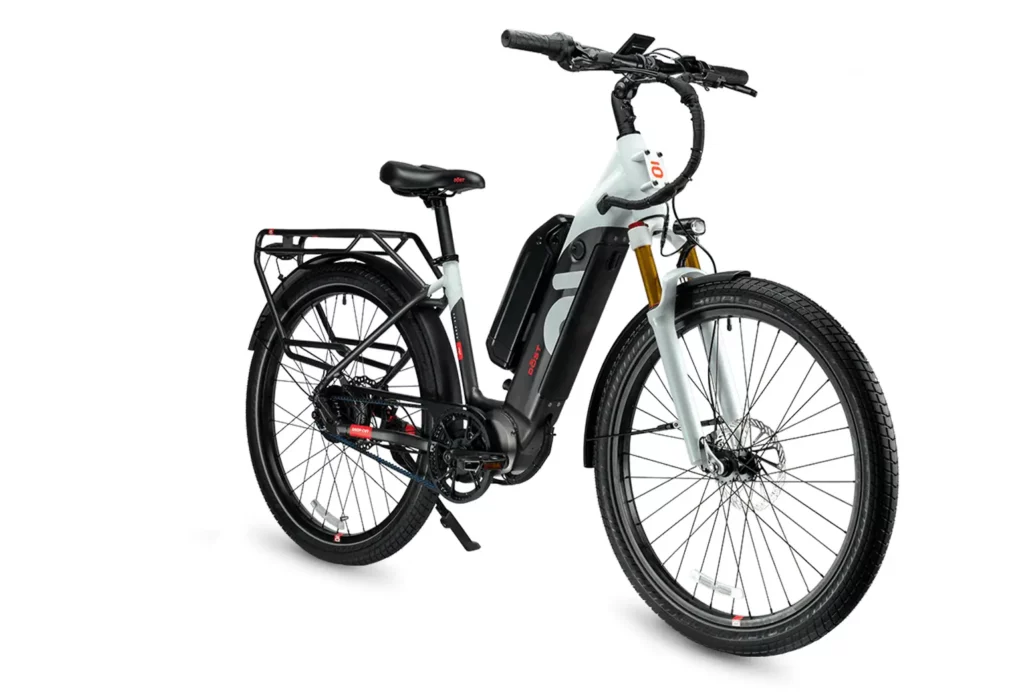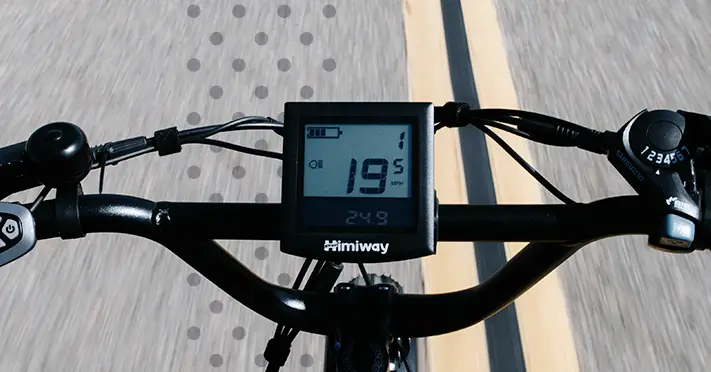Electric bikes are more complicated than traditional bicycles, so as we proceed here we’ll look more at the electrical side. But to begin with we will look at ways to keep any bicycle running to the best standard.

A Well-Maintained Electric Bike
At the end of the day, an e-bike is a bicycle with a battery, controller, and motor added to make it an e-bike. Good bike maintenance should ensure that the electronics don’t have to fight a rusty old banger of a machine to get you where you’re going.
Clean and lubricate the chain regularly, and take extra care if riding in wet or other hostile conditions. A rusted, stiff chain will demand more from the motor and could break at the worst possible moment.
Keep an eye on your brakes, too. If the brakes are dragging on the disc rotor or rim – like if your brake rotor is warped or bent – this will negatively affect range.
A clean e-bike is a happy one too, though don’t ever jet wash the motor or battery casing as this can short out the electronics.
You should inflate your tires to the manufacturer’s recommended air pressure. On most bikes, this is between 30 and 60 pounds per square inch (psi), but on a fat tire electric bike, this can be as little as 8 psi. Generally speaking, the harder the tire, the more efficiently it will roll. But make it too hard, and you sacrifice traction. An overinflated tire could also explode – not something you want on a fast downhill.
Store the e-bike in a dry environment – ideally indoors, such as in a garage or outbuilding to keep it out of the weather. If you can keep it in a temperature-controlled area of the house, the battery will benefit from the warmth on a cold day, as we’ll discuss next. If the battery can be removed easily from the e-bike, keep it stored inside your home.
How Weather Conditions Impact Your E-Bike’s Range
Too hot and too cold weather can affect how far the battery will go on a charge. This is why we suggest keeping at least the battery in a temperature-controlled area of your home. Their ideal operating temperature is 60-75 degrees Fahrenheit, and if far below that you may find you won’t get anything like the advertised range out of your e-bike. At 90 degrees or higher, the power system could overheat and shut down if you are riding the e-bike hard.
We can’t avoid cycling in adverse weather at times. However, you will find that with a tailwind or no wind at all, you’ll have less air resistance and will travel farther. Wet weather can impact friction between tires and surfaces. If you’ve tried a hill start on mud before, you’ll soon understand that!
Gentle Acceleration
The best way to start on a muddy surface is actually the most economical on the battery. If on pedal assist (PAS), have it in a low setting and pedal gently and smoothly at first to avoid losing traction. The same applies to maximizing battery – on throttle or PAS, ease on the power as opposed to kicking hard as this will ask for less power from the system while you build momentum.
Ever tried pedaling away in high gear on a traditional bike? Your legs won’t thank you as they struggle at first. An e-bike motor will feel the same way – it will need a lot more power to pull away when it’s in a lower gear. When coming to a stop, make it a habit to switch to a lower gear so when you pull away it will be less of an effort.
Route Consideration
A flatter route can be more economical, as can one with fewer stops. Though you may have purchased an e-bike to flatten those hills, a big hill can suck up those electrons faster than a flatter way to your destination. Don’t plan a 5-mile detour toward a destination 10 miles away, but if sensible, you’ll soon find that you can get more miles from the battery.
Stopping and starting regularly can also impede your range. On city streets, that could mean avoiding heavy traffic – that can also be good for safety as well. If available, choose a cycle path over a car route as these are often less congested, meaning fewer stops per mile.
Select a Long Range E-bike
It may seem obvious, but if you want to do 30-plus miles per ride on a regular basis, choose an e-bike that’s capable of that. In this article, we touch on a selection of longer-range electric bikes. All of the longest-range e-bikes we look at have dual-battery systems that make it possible to do 100 miles of riding in a day.
Because of the size of the battery or batteries, extremely long-range e-bikes can be as much as 15 lbs heavier than a standard-range bike. Weight being another enemy of range, having two 672Wh batteries won’t necessarily get you double the range of a single 672Wh battery, as the added weight will reduce your potential distance.
Travel Light
Weight is one of the biggest enemies of range. Not all e-bike riders are skinny minnies! If you are riding to lose weight then it may pay to choose an electric bike with a bigger battery at first as it will be able to get you those extra miles.
Regardless of your body type, consider how much other gear you are carrying. For a longer fun run out into the sticks on an overlanding e-bike, you may want lunch, water, and a decent repair kit to get you home. If you’re just having a blast on the roads for 3-4 hours, then travel light if you can to get the best out of the battery. Finally, if you have pannier bags, check what you left in there after the last ride as it could save a pound or three of unnecessary weight for your ride.
In Short…
Particularly if you are riding the e-bike as a utility/car replacement, you won’t have ideal conditions all the time. Keep an eye on the e-bike controller’s estimated range (that will change with every power setting) and you should have an idea of when it needs to be charged.
Keep the battery charged to the max every day you’re using it (but not if you plan to store it for the winter – that can degrade the battery too) and you should be able to squeeze every last mile out of it.

